When animals and
plants use color to be noticed it is called advertising coloration.
Advertising coloration can be used to either warn or attract animals.
Come Pollinate Me!
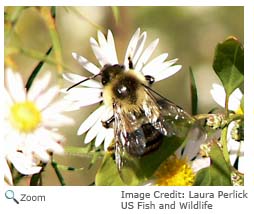 The bright colors of flowers and berries are advertising coloration that attracts animals. Flowers need to be pollinated to reproduce. Bees and hummingbirds are attracted to bright colors and will pollinate the flowers. The bright colors of flowers and berries are advertising coloration that attracts animals. Flowers need to be pollinated to reproduce. Bees and hummingbirds are attracted to bright colors and will pollinate the flowers.
 Some pollinated plants will produce berries. These berries will turn a bright color when they are ripe. The bright color lets berry-eating birds know the fruit is sweet and safe to eat. After birds eat the berries, the seeds will pass through their digestive system and be left behind. Some of the seeds left behind will grow into new plants! Some pollinated plants will produce berries. These berries will turn a bright color when they are ripe. The bright color lets berry-eating birds know the fruit is sweet and safe to eat. After birds eat the berries, the seeds will pass through their digestive system and be left behind. Some of the seeds left behind will grow into new plants!
Time to Mate
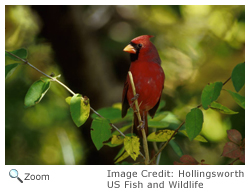 Color is also used to attract mates. Many male birds like the northern cardinal are brightly colored to attract females. Bright feathers can be an indication of how healthy the bird is! Color is also used to attract mates. Many male birds like the northern cardinal are brightly colored to attract females. Bright feathers can be an indication of how healthy the bird is!
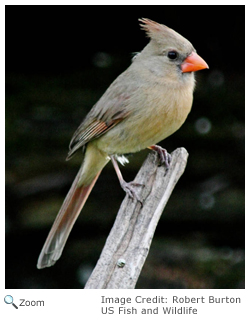 Female birds are naturally attracted to healthier males because their offspring will be healthier. Female birds are often less colorful. This helps camouflage them when they are nesting. Female birds are naturally attracted to healthier males because their offspring will be healthier. Female birds are often less colorful. This helps camouflage them when they are nesting.
| |
Warning! Danger!
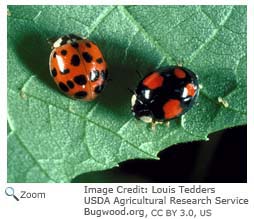 Advertising color is also used to warn animals away. The ladybug has bright orange wings with black spots. Its coloring warns predators that the ladybug tastes awful.
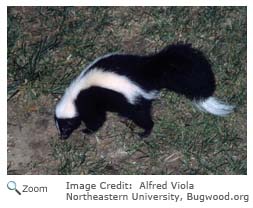 The striped skunk has short-stubby legs and would have trouble trying to run away from a predator. It has other adaptations that help it survive, including its white stripes that are a warning to predators that they may be in for a nasty surprise if they try to attack. The striped skunk has short-stubby legs and would have trouble trying to run away from a predator. It has other adaptations that help it survive, including its white stripes that are a warning to predators that they may be in for a nasty surprise if they try to attack.
Boo! Startle Coloration
 Some animals, like the red-eyed tree frog, may scare prey away with their color. Red-eyed tree frogs sleep during the day. If a predator came up to them and they opened their eyes, the bright red color of their eyes might shock the predator long enough to give the red-eyed frog time to hop away to safety!
|
 Advertising color is also used to warn animals away. The ladybug has bright orange wings with black spots. Its coloring warns predators that the ladybug tastes awful.
Advertising color is also used to warn animals away. The ladybug has bright orange wings with black spots. Its coloring warns predators that the ladybug tastes awful.
 Some animals, like the red-eyed tree frog, may scare prey away with their color. Red-eyed tree frogs sleep during the day. If a predator came up to them and they opened their eyes, the bright red color of their eyes might shock the predator long enough to give the red-eyed frog time to hop away to safety!
Some animals, like the red-eyed tree frog, may scare prey away with their color. Red-eyed tree frogs sleep during the day. If a predator came up to them and they opened their eyes, the bright red color of their eyes might shock the predator long enough to give the red-eyed frog time to hop away to safety!





